1.Introduction: A Road That Respects the Land
At Hosachiguru’s Dhanvi Farm, the ask was simple—but it carried the weight of a powerful philosophy:
“Build roads that support the land, not stand apart from it.”
Dhanvi isn’t just a farm—it’s a living, breathing ecosystem. A space where every inch of soil is respected, every drop of water matters, and every tree has its place. And when a place is nurtured with such care, the infrastructure must carry the same intention.
There was no question of pouring over concrete or disturbing the earth with imported materials. Instead, the goal was to listen—to understand what the land already held—and then gently reinforce it. Our job wasn’t to change the land. It was to honour it and help it hold itself better.
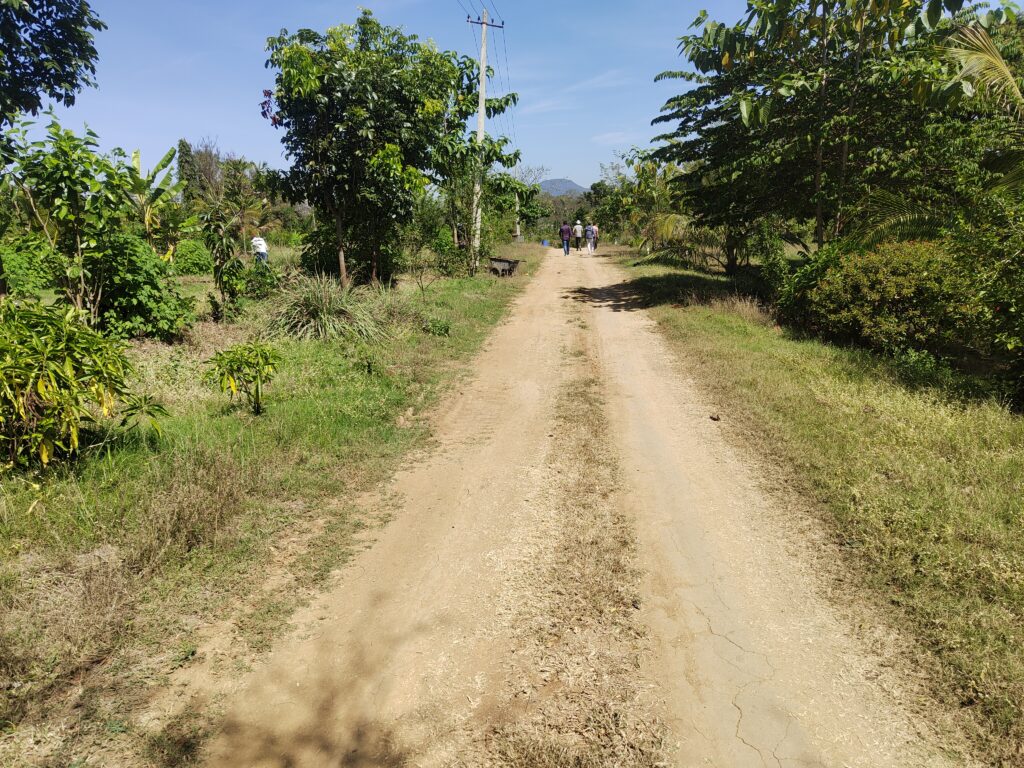
2.The Problem with Traditional Approaches
Most road construction projects rely on:
● Excavation and replacement of local soil
● Concrete or asphalt overlays
● Cement-treated base layers
● Heavy carbon-emitting processes
These methods often leave scars—visually, ecologically, and structurally—especially in environments meant to be green and organic.
But for a place like Dhanvi Farm, that method just didn’t fit.
Our Solution: Smart Soil Stabilisation Using Bio-Enzymes
3.1 Understanding the Soil
Our team began with a thorough geotechnical assessment of the native soil. This was not to find weaknesses to replace—but strengths to reinforce.
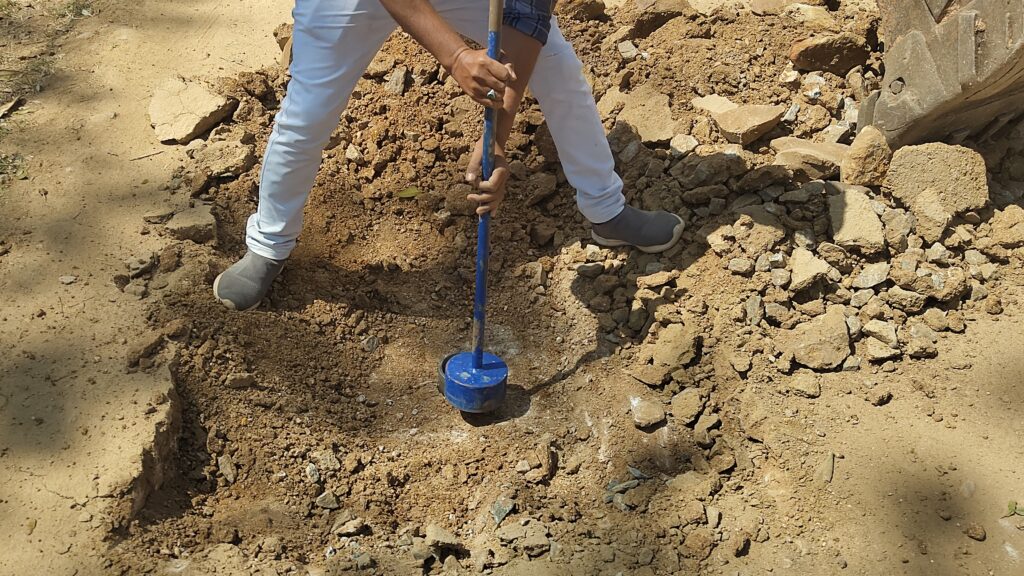
3.2 Bio-Enzyme Based Stabilization
Instead of replacing the soil, we treated it. Using bio-enzymes, we initiated a natural chemical reaction in the soil to:
● Improve load-bearing capacity
● Reduce plasticity and moisture retention
● Increase compaction
● Extend life and reduce maintenance
This technology allows for eco-friendly roads with no cement, bitumen, or synthetic chemicals—perfectly aligned with Hosachiguru’s vision of sustainability.

4.Construction Process
4.1 Minimal Disruption, Maximum Impact
The steps we followed ensured zero external materials and minimal machinery—every move was intentional.
Step-by-Step:
1.Scarification of Existing Soil
Loosening the top layer to prepare it for treatment.

2.Mixing with Bio-Enzymes
Carefully measured and sprayed bio-enzyme solution
mixed into the soil.
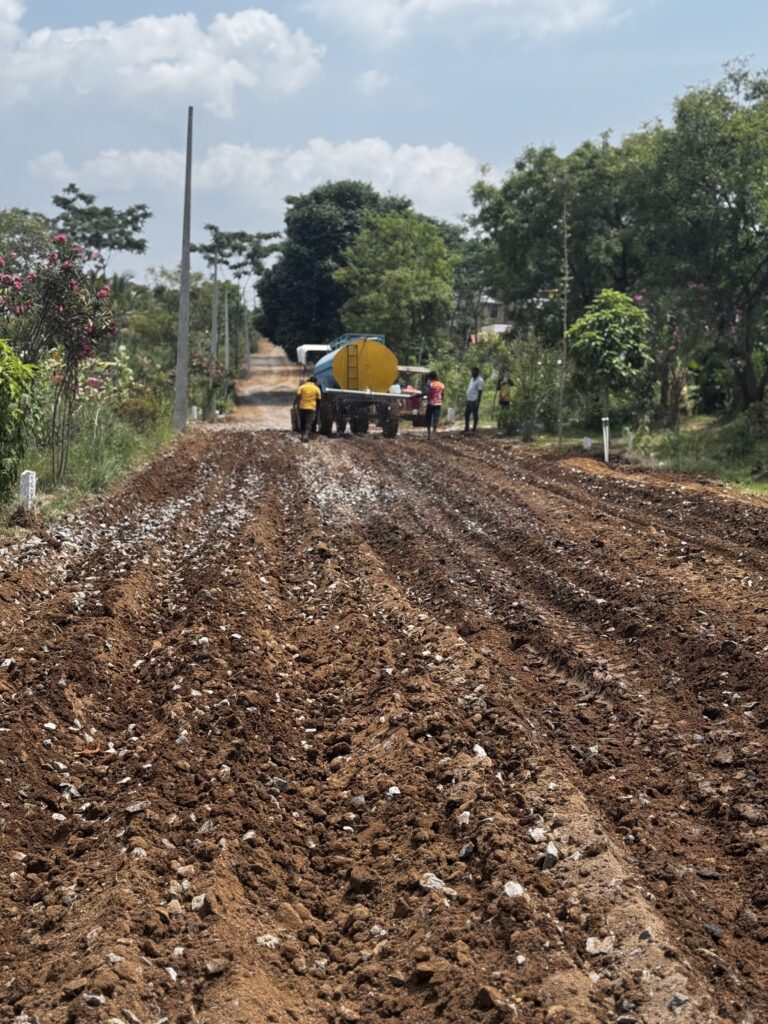
3.Compaction
Using rollers to compact the stabilized soil, creating a high-density base.
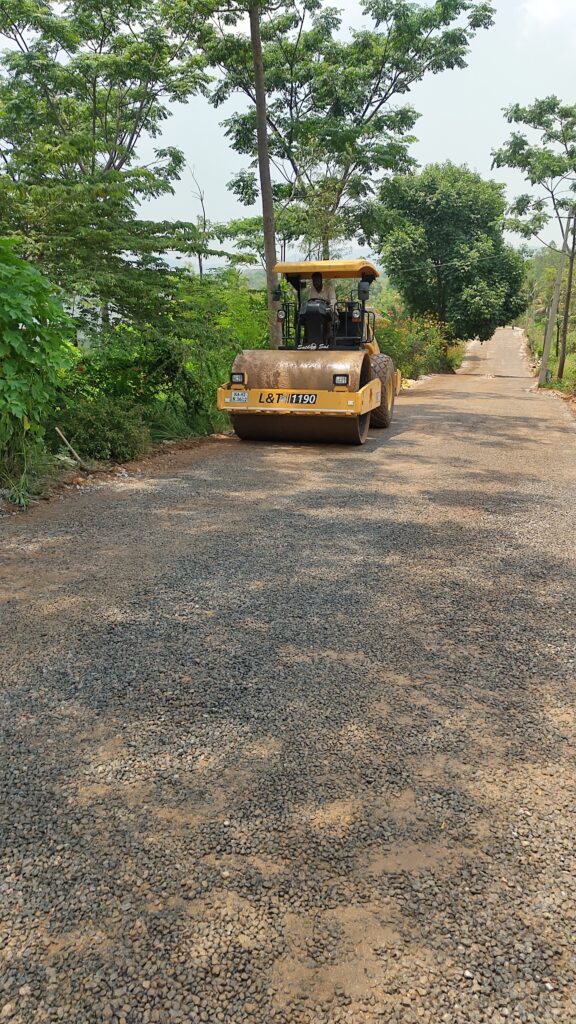
4.Curing Period
The soil was left to settle and cure naturally over the next few days.

5.Why Bio-Enzyme Soil Stabilisation Was Ideal
Compared to traditional road-building methods that rely heavily on imported materials and cement, bio-enzyme-based stabilisation offers a low-carbon, cost-effective solution. It uses the existing soil at the site, improving its strength and compactness naturally. The result is a durable, farm-friendly road that disappears into the land while carrying all the load of modern
needs. No visible concrete, no harsh lines—just soft, strong roads that respect the land they lie on.
6.The Outcome: Roads You Can’t See—But Can Always Rely On
After a few days, the road seamlessly blended into the landscape. There were no raised shoulders, no visible changes in terrain, and no imported stones or cement patches.
What emerged was a strong network of roads—resilient to rain, farm traffic, and time. But what stayed intact was the land’s original beauty.
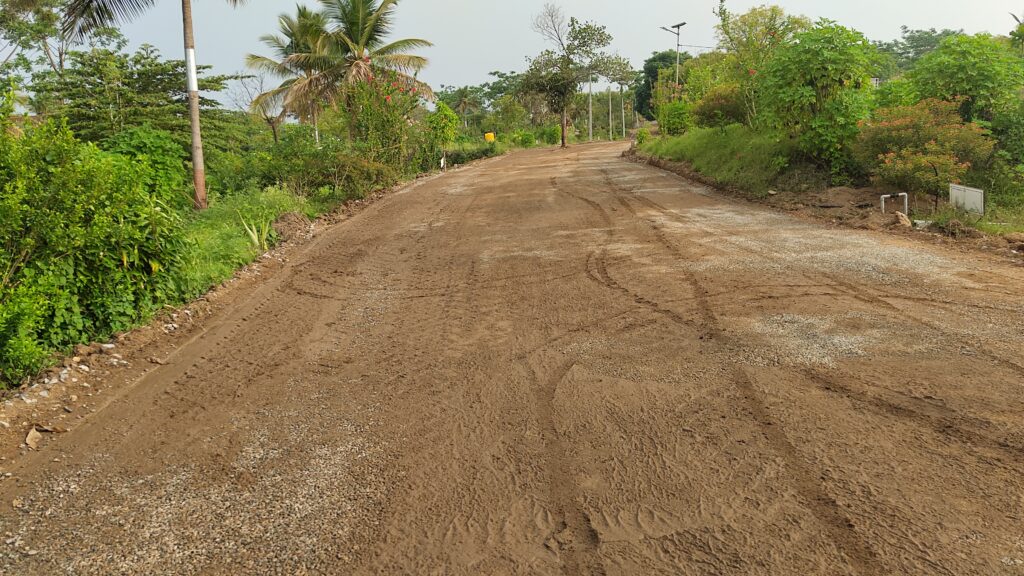
7.Sustainability Impact
- Zero Cement: No concrete or pavers used.
- Zero Steel: No steel reinforcements.
- 100% Local Soil: Nothing imported.
- -60% Carbon Emissions: Compared to traditional methods.
- Reduced Water Use: Bio-enzymes reduce water retention needs during curing.
The project reflects a model for regenerative construction—a way to build infrastructure that coexists with nature, rather than competing against it.
8.Final Thoughts: The Power of Invisible Engineering
When roads don’t draw attention—but deliver strength—that’s when engineering meets purpose.
At Dhanvi Farm, we didn’t just build a road.
We built trust with the land, and proof that roads don’t always need to be loud to be strong.

Leave a Reply